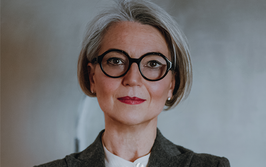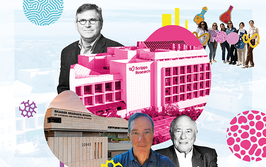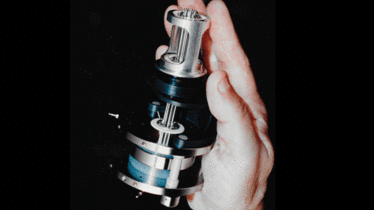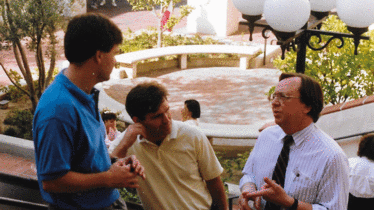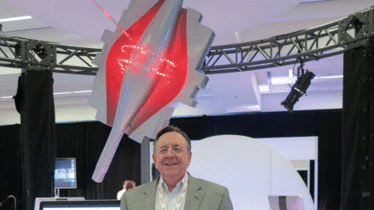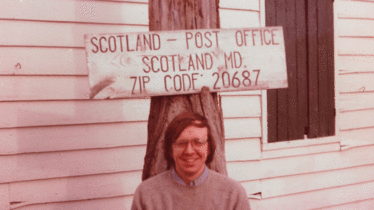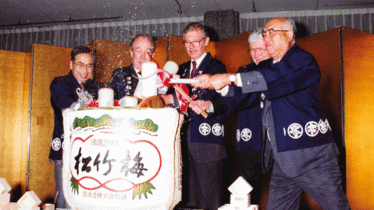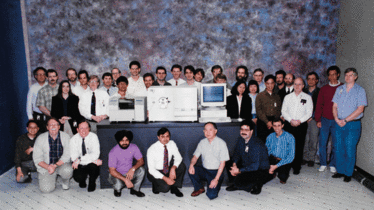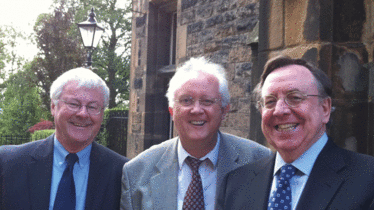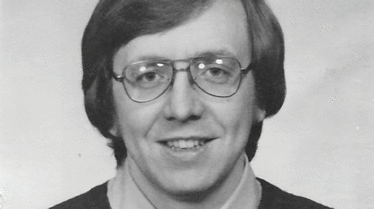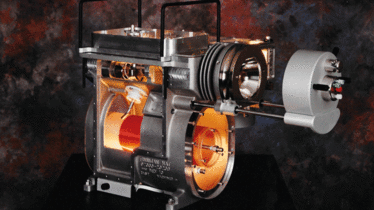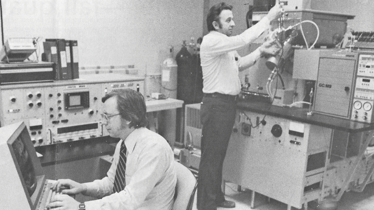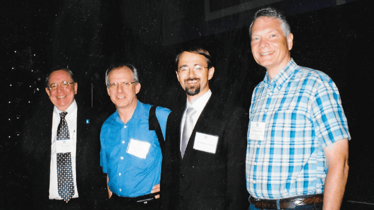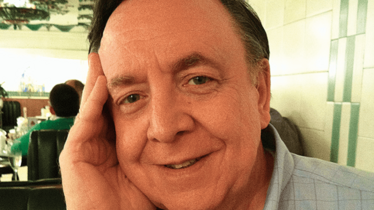Building Mass Spectrometry from the Inside
The development of mass spectrometry is one of science’s great technology stories. I’ve been fortunate to spend my career in applying mass spec to the life sciences, both in academic research and in building new technologies within industry. From the edge of retirement, and looking back over 25+ years, here’s my version of how it unfolded.
The year 1988 was a big one for my career. In terms of technology, it saw the introduction of electrospray ionization. This was a real game-changer: it not only allowed us to ionize large and polar molecules, but also let us use liquid chromatography (LC), which was particularly important for biological samples. It also meant that we could fragment peptides directly to gain sequence information.
That same year, matrix-assisted laser desorption/ionization (MALDI) was also invented. And, on a personal note, I moved from a professorship at the Mayo Clinic – arguably one of the best jobs in mass spectrometry in US academia – to industry, joining Finnigan Corporation. My role in the company, you won’t be surprised to hear, was to bring MALDI and electrospray into the portfolio.
The intervening 25 years have been a scientific adventure that I feel incredibly privileged to have experienced. I still marvel at the fact that when I read the newspaper on any given day there is always at least one article, be it in genomics, biochemistry, pharmaceuticals, earth sciences or whatever, that my company is significantly involved in.
Here, I want to give a sense of the excitement and intellectual stimulation that I enjoyed right up to my retirement earlier this year. My passion for new technology is really what has driven me.
Academic beginnings
One thread that has run through my career is an involvement in the use of mass spectrometry to advance the field of proteomics. I started working on the topic in the 1980s at the Mayo Clinic and in that pre-electrospray era it was extremely difficult to look at proteins using mass spectrometry. Generally, we had to cut proteins up with trypsin, digest each peptide with acid to dipeptides, and derivitize those ahead of the gas chromatography (GC)-MS setup. This was extremely laborious and tedious – and, to be honest, not even that useful. The mainstream approach at the time was Edman chemical degradation sequencing which, while also very tedious, was at least effective. Being a mass spec guy with a passion for the latest instrumentation and a thirst for tough challenges, I went my own way.
It’s easy to trace out how I got to that point. I started as a chemistry undergraduate at Glasgow University in Scotland, and followed it with a graduate degree in mass spectrometry with one of the leading mass spectroscopists of the time – Ivor Reed, who was also at Glasgow. Ivor was an excellent scientist and, while working with him, I actually built a mass spectrometer. It used photoionization and simultaneously detected the electron and ionized molecule: it was a coincidence time-of-flight (TOF) MS. And it kind-of worked – at least, well enough to get my PhD. After that, Ivor arranged a post-doc for me at Johns Hopkins medical school in Baltimore working with Catherine Fenselau – another highly-respected mass spectroscopist. There, I focused on pharmacology and drug metabolism, and found that it was a wonderful experience to use instrumentation in a very applied sense. My next stop was Purdue University, where once again I worked mainly on drug metabolism. Whilst there, I tried to tackle the kinds of molecules that were extremely difficult for other techniques; for example, complex anti-cancer alkaloids or the immunosuppressive drug cyclosporin, which is a complex cyclic peptide. When I moved to the Mayo Clinic in Minnesota I got very interested, to the point of distraction, by the problem of protein structural analysis and quantitation. It seemed like an extremely important field to me and over a 10-year period I worked with a number of collaborators at Mayo on using MS in an attempt to sequence proteins
While some of the target molecules changed, the main thread throughout my time in academia was a desire to use the most sophisticated MS instrumentation available to tackle the most complex challenges in terms of structural analysis. I ended up as a full professor and, to be quite honest, I thought I would be at Mayo for my entire career – why wouldn’t I?
During this extremely satisfying point of my life, the folks at Finnigan Corporation approached me to ask if I would join them. My initial response was, “You must be kidding!” I went back home and must have mentioned it to my wife (who is from Baltimore). She said, “Where are they based?” “The San Francisco Bay Area,” I told her. “Well, I’m packed,” she said, “let’s go!” We took on the move as an adventure, both quitting good jobs to move to the sunshine. Colleagues were surprised, but could see our reasoning; no one in the Midwest tends to argue with a move to California.
Finnigan was clearly a very forward-thinking company at the time. Its main business was in environmental analysis using GC-MS, but the leaders realised that in order to grow, mass spectrometry had to move into other areas, particularly life sciences. They didn’t quite know how that should be done, which is why they recruited me. They wanted to use my applications expertise to help them figure out how to make MS systems that could solve problems in the life sciences. The buzz at conferences surrounding electospray and MALDI that year only added to the excitement.
Peptide pioneers
Since 1988, there has been continual – and sometimes step-function – improvement in how well we can measure proteins, but one of the biggest advancements has been in data analysis. Most researchers, especially Don Hunt at the University of Virginia, were performing fragmentation of peptides and then manually interpreting – as best as they could – the sequence of those peptides. The breakthrough that was clearly needed was the ability to automate interpretation of fragmentation data – and that came from John Yates in the late 1990s.
John had recognized the real benefit of all the protein sequence data that had been generated from genome sequencing. Why not take all that sequence information, look at the tryptic peptides that would result, then calculate what the fragments would be?
That way, you could compare your own experimental peptide fragmentation data with the in silica-generated database. The program was called SEQUEST. I was already working with John, who had just moved from Caltech to the University of Washington, when he told me about his work on SEQUEST. He had just filed for patents and I immediately made sure that we licensed the protocol exclusively because the absolute importance of John’s work was clear to me at this very early stage. In that regard, I feel that I can take some small credit for the advancements that followed. The best technology that we had back then for fragmenting peptides was the ion trap, because of its scan speed, sensitivity and richness of fragment information. When used in conjunction with John’s SEQUEST algorithm, it became a very powerful tool for rapid protein sequencing. There was a sense at the time that Q-TOFs were a better instrument to perform the analysis, but they were actually quite slow.
I remember asking John if he would be willing to talk to The Protein Society at a lunchtime seminar about the SEQUEST algorithm. He dutifully agreed but as I looked around the room, I could sense the sheer lack of understanding. Afterwards, John asked me how it went. “It was fabulous,” I said. “No one had a clue what you were talking about, but don’t worry, they will.” That was not a criticism of the audience who weren’t all that familiar with mass spectrometry, let alone advanced algorithms for data analysis.
I’ve sat in rooms filled with dumbstruck experts more frequently than you might expect. I guess one of the things that I brought to Finnigan and to Thermo Fisher Scientific was an ability to anticipate quite accurately what would be important and useful for researchers in the future. Being in academia for an extended period, trying to solve some of the problems researchers face, certainly helped me get a feeling for the next big thing.
One of the factors that encouraged me to go into industry is the sometimes frustrating nature of the academic world. You might get an inspired idea about how best to use the latest-generation of mass spectrometer one day and apply for a grant; a year or two later, you might actually get the funding, and, by the time you had the instrument you were initially excited about, it would be two or three years too late. That said, it is that very same academic background that has allowed me to remain connected with the research world right the way through my career. Have I been able to apply greater influence on science doing my job within the company than if I had remained an academic? I believe I have, and that makes me feel even more fortunate to have been so involved in the development of the exciting technology around me. I like to believe that I would have made some contributions in academia if I’d stayed but I travelled the more satisfying route for me, especially in terms of being able to make an impact.
Mass spec impact
To give an example of an actual impact (see “The Big Decisions” on page 28), I go back to the mid-1990s and the development of a product that combined the ion trap with electospray (the original instrument was called the LCQ). I initiated the project with Jae Schwartz, one of our key instrument developers. Once the basic principles had been worked out, I moved my office downstairs to be next to the head of R&D. This way, I insisted, we could more easily engage with each other on questions such as, “Why are we doing this again?!” (from him) and “Is it possible to increase the speed and resolution even more?” (from me) – my job title at the time was head of marketing. It was a wonderful working relationship that really linked application knowledge with engineering. When the LCQ finally came out, it was an incredible hit and changed the ability of the whole field to do rapid protein sequencing.
Subsequent experimentation essentially aimed to increase the speed, efficiency, and sensitivity of protein analysis and is really what has driven the advances in mass spectrometry that we’ve seen over the past 20 years, in my opinion. After the original ion trap, we came out with the linear ion trap, which was much faster with much higher sensitivity. We then coupled the linear ion trap to a high resolution super-conducting Fourier transform MS (FTMS) in 2003, which was yet another breakthrough in protein analysis. And in 2005, we replaced the super-conducting FTMS with the Orbitrap technology, which was another step-function change. I could go on, up to last year’s release of the Fusion instrument, which combines quadrupole, linear ion-trap, and ultra high resolution Orbitrap. Suffice to say that it is hugely gratifying to have witnessed such technological advancement in a relatively short time.
In fact, the Moore’s Law-esque advancement in our ability to identify and quantify proteins over the last 20 years is probably one of the few areas where end-users in a field have fully acknowledged the fact that industry has driven much of the progress. And I have to say that organizations, such as the American Society for Mass Spectrometry, have been very clear that they really appreciate not only what industry has achieved, but also the support it has provided. In a field like mass spectrometry, it’s not surprising that industry has led the way – you need something akin to a small army to put these extremely complex instruments together. In a bygone era, a research lab could put together hardware – magnets and pumps – and use chart recorders, but as electronics and software have evolved so fast, the breadth of scale required is outside of a typical lab’s capability. In fact, it’s becoming a problem more generally, even for instrument companies: it is very difficult for us to recruit instrument developers from academia, because there are so few labs that are working in the area. We mainly now bring in raw talent and then train them.
Learning the hard way
Where the ion trap/electrospray project was a clear success, the road hasn’t entirely been paved with gold. Though we were actually the first to offer commercial MALDI-TOF systems, we went astray. The business plan stated that we should sell a new benchtop MALDI-TOF for the same price as an Edman sequencer, which made complete sense: competing/complementary technology at a competitive price. However, some colleagues argued that it was such a beautiful machine that it was worth much more, which was quite possibly true. Indeed, researchers came in droves to test out the instrument and told us how wonderful it was, after which we would tell them the price, and we’d never see them again. A year later, competitors released lower-priced instrumentation and we were simply edged out of the MALDI-TOF market. We misjudged the customer and value proposition at hand. However, I can assure you, we didn’t make that same mistake twice.
The silver lining is that it meant we focused everything we had on LC-MS, which turned out rather nicely…
The size of the opportunity that arose from coupling the linear ion trap to the FTMS was a huge surprise to us all. The business grew much faster than we could have possibly imagined, up to annual sales of well over $100 million. Despite the success, we realized that the costs and maintenance associated with super-conducting magnets could be a problem for labs. And given its high price, it was unlikely that customers would buy more than one. The brand new Orbitrap technology was ready and waiting, so we decided to replace the FTMS side of the system, which was a huge gamble in many ways. It was new technology, and while we thought it would be great, you never know. Certainly, some of the senior managers in the company were puzzled and extremely nervous as to why we would cannibalize a very successful product with something that was essentially unproven. But, as you may know from Alexander Makarov’s Orbitrap Story (see tas.txp.to/issues/0614-orbitrap), things worked out beautifully. It replaced the FTMS system completely and enabled labs to make multiple purchases and ramp up their research efforts.
What’s amazing is the fact that each time we launch one of these new high-end instruments, there is great demand despite flailing economies or the sequestration problem in the US, for example. I guess that when new technology is too good, too exciting and too useful to miss, people somehow find the money. And I am absolutely confident that this will continue to be the case. There is always room (or money) for breakthrough innovation that can be successfully applied.
End game
I’ve had a great deal of fun and satisfaction over my career. In some ways, there are still many things that I would like to be involved in, such as the rapid move of mass spectrometry into clinical diagnostics, multiplexed protein quantitation that provides astonishing accuracy and precision in biological systems, and “top-down” proteomics. However, there is no getting away from the fact that working in industry is hard; there are deadlines, business pressures, and a huge amount of travel. It feels like the right time to hang up my hat and retire. The acquisition of Life Technologies and an excellent year for the mass spectrometry division have left the business very much in an upward trajectory and it’s clearly much better to leave on an up than on a down.
Perhaps more importantly, I’m in the very fortunate situation that my wife Gail actually wants to spend more time with me!
Ian Jardine was Vice President of Global R&D for Thermo Fisher Scientific, and before recent retirement was Chief Technology Officer, Life Sciences Mass Spectrometry at Thermo Fisher Scientific in San Jose, CA, USA.
The Big Decisions
Remembering that building successful commercial analytical instruments is very much a team effort, here are the five major advances to which I made key contributions over the last 25 years. These had a significant impact on Thermo Fisher Scientific and on the development of mass spectrometry in the life sciences. They were all very controversial inside the company, but turned out to be correct. Fundamentally, all decisions were based on the philosophy that we had to go down compellingly differentiated paths, relative to all competitors, because they all had clear unique strengths.
1. Coupling ESI to 3D ion trap technology in parallel to ESI quadrupole in the early 1990s, followed by development of a new commercial LCMS ion-trap instrument (LCQ - 1996) before a new LC triple quad (Quantum - 2001). We could only afford to do one development at a time because of business financial realities. The key LCQ developers were Jae Schwartz and George Stafford. My reasoning was that although Finnigan was the first company to introduce commercial triple quad instruments, it was going to take a long time to catch up with the dominant position that Sciex had created with ESI triple quads by the mid-1990s.
2. Championing the potential of 2D linear ion-trap technology – and getting the funding to develop it in the late 1990s – early 2000s. After listening carefully to key scientists (John Syka, Jae Schwartz and Alan Schoen) regarding the potential gains of this technology over 3D ion-traps, especially with respect to sensitivity, dynamic range, and scan speed, I obtained the funding to create the research and then LTQ (2003) instrument program. Again, major pushback came from triple quad and even time-of-flight advocates, but the power of ion-traps to generate the best peptide sequencing data was compelling.
3. John Syka, working in Don Hunt’s lab at the University of Virginia, demonstrated the incredibly effective coupling of the linear ion-trap to superconducting FTMS systems. It was clear then that we should build such a commercial system to enter the world of high resolution/accurate mass MS for life science applications, and especially for peptides and proteins. Around 2001, I would not fund the construction of a commercial hybrid LTQ FTMS without a commitment from our brilliant Bremen engineers (under the leadership of Stefan Horning) that it would be an easy to use, automatable system, which was fast enough (high-resolution scan speed of 100,000 resolution in one second) to be essentially a dedicated HPLC detector. With the help of John Syka and Mike Senko in San Jose, they delivered just such a dream system in 2003.
4. Because Q-TOF technology had become very successful, we undertook serious development of such a system in the early 2000s in San Jose. We had very nice TOF systems up and running just as the Orbitrap was coming up to speed in Bremen, but the latter was still very new with many uncertainties. We could not afford to build both systems for commercial introduction (again, business reality), so we cancelled the Q-TOF program and went with the clearly differentiated Orbitrap. It was obvious that every one of our major competitors would have a Q-TOF, and since at that time we were not a major HPLC player, we would certainly lose in the marketplace.
5. After the introduction of the quadrupole Orbitrap configuration (Q Exactive) in 2011, and its subsequent major success, especially against Q-TOF systems, and the overall success of our highly competitive portfolio (thanks in particular to the leadership of Iain Mychreest), it became clear that it was time for us to expand our efforts. We needed competitive LC-MS/MS systems (ion-traps, quadrupoles, Orbitraps and combinations thereof) outside of proteomics, in applications areas where we had not been confident enough to compete intensively, such as drug metabolism, metabolomics and clinical chemistry. Thermo Fisher Scientific’s LC-MS portfolio now competes in these areas today. And the programs and projects that I have championed will come to fruition in the next few years, which will ensure that mass spectrometry, and Thermo Fisher Scientific in particular, will revolutionize many areas of clinical diagnostics, which frankly, desperately needs much more accurate and precise analytical systems.

“For the past 25 years, one person has stood out as Thermo Fisher’s greatest champion of innovation,” according to CEO Mark Caspar. That person is Ian Jardine. In presenting Thermo Fisher Scientific’s 2014 Lifetime in Innovation Achievement Award to Jardine, Casper described his “infectious passion for science,” and his “uncanny ability to predict what customers would need long before they knew themselves.”This publication also benefited from that insight: Ian served on the Editorial Advisory Board from pre-launch days up until this issue.
